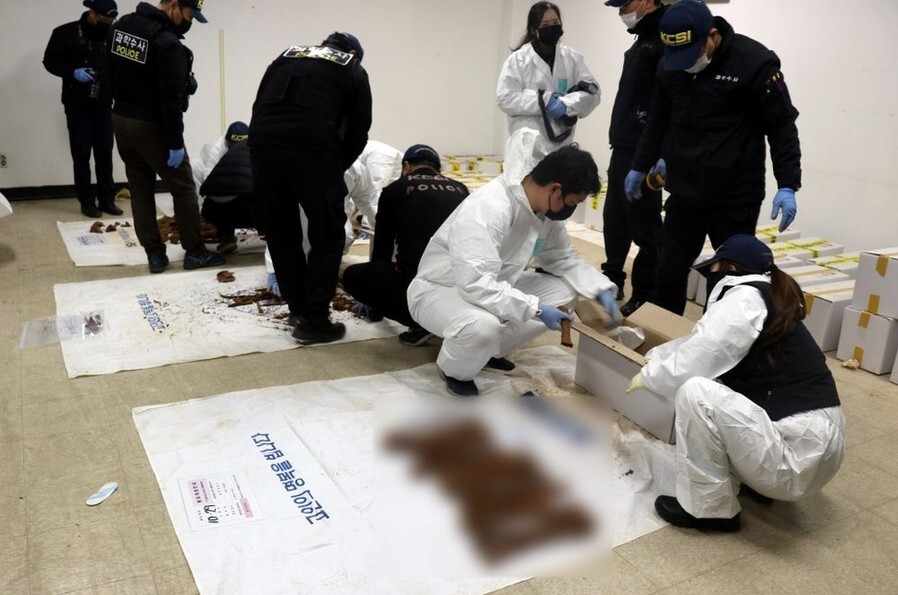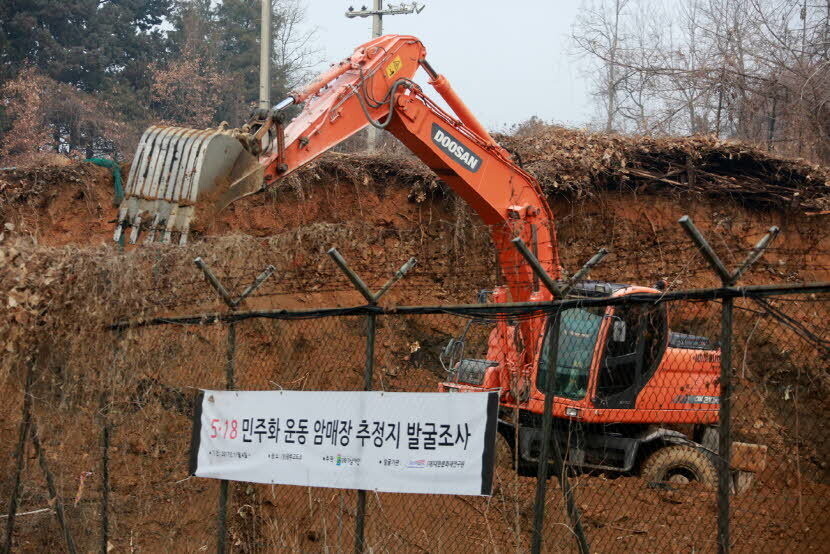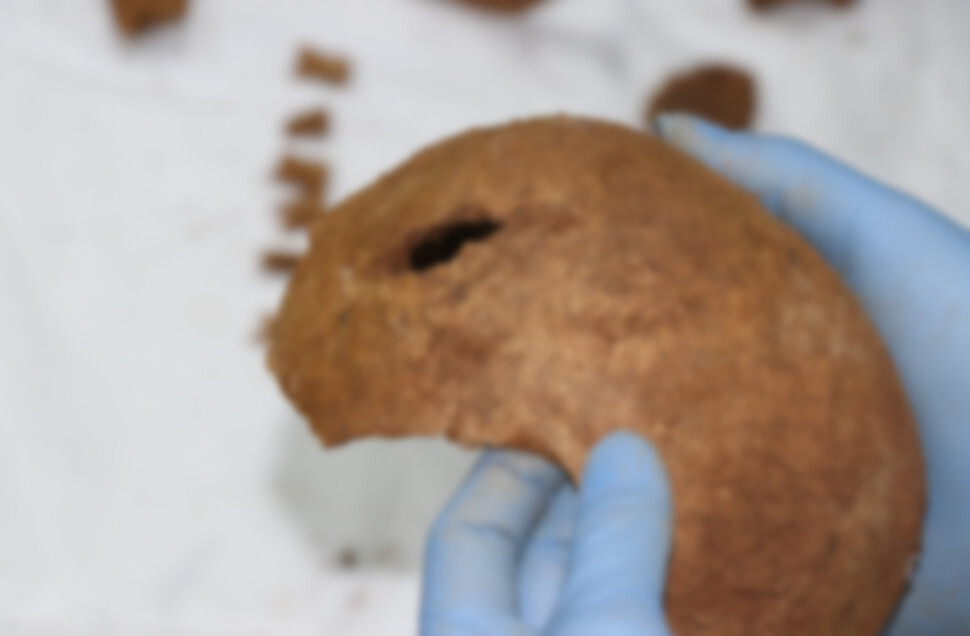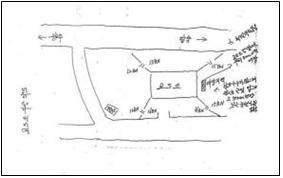hankyoreh
Links to other country sites 다른 나라 사이트 링크
[News analysis] Questions surrounding unregistered remains from Gwangju Democratization Movement

The fate of individuals who disappeared during the Gwangju Democratization Movement in May 1980 is considered a key focus for investigation alongside the individuals responsible for the order to open fire on demonstrators. The discovery of some 40 sets of unregistered remains at the old Gwangju Detention Center site is igniting not only local but also national interest in a possible connection to missing persons from the events in Gwangju at the time. While the majority of local residents have adopted cautious, wait-and-see approach to find whether identification findings show a connection between the remains and May 1980, others have suggested that a connection cannot be ruled out.

The former Gwangju Detention Center site had been seen as a likely location for secret burials. A document titled “Investigation into the Gwangju Incident” drafted on May 31, 1980, by the martial law command at the time indicated that “27 civilians passed away at Gwangju Detention Center.” The 505 Security Unit, the Gwangju branch of Defense Security Command, recorded 28 deaths. Most researchers on the subject have used these documents as a basis for estimating the number of deaths at Gwangju Detention Center. Another focus of attention has been on eyewitness accounts of dozens of deaths of Gwangju resident and student detainees when the 3rd Airborne Brigade relocated its camp to the detention center on May 21, 1980. Eyewitness accounts also put the number of deaths at around 28.

The allegations of secret burials at Gwangju Detention Center have been surfacing due to the discovery of bodies temporarily buried at the site shortly after the events of May 18. A 25-year-old named Seo Man-o who was shot by martial law forces while passing in front of the center was found by family members on a nearby hill on May 26, 1980, while the Gwangju city government found eight bodies within the detention center and two on the hill in front. Guards shared eyewitness accounts of martial law forces “burying the bodies, covering up the traces completely with grass, and then sticking a 10cm twig in the spot.”

The cemetery within the detention center where the latest discovery of 40 sets of remains took place is also seen as a major focus of secret burial allegations. In 2017, the May 18 Memorial Foundation disclosed a report on “Gwangju Detention Center activities” drafted by the Gwangju District Prosecutors’ Office, which stated that six bodies were temporarily buried near the detention center’s cemetery on May 21, 1980. On the 24th of the same month, the Gwangju District Prosecutors’ Office sent a message to the detention center order it to hold discussions with military authorities on disinterring the temporarily buried bodies for an inquest.
But some observers said the state of the remains and the area of the site where they were found reveal no clear connection with May 1980. The remains were so severely corroded that they crumbled upon touch. With many discovered as skulls rather than in complete form, witnesses said it would be meaningless to talk about “sizes” or “holes.”

The area of the burial site has also raised questions. People with experience relocating remains said that burying dozens of bodies in an area capable of accommodating only around three would have requested the assembly of bones after the flesh had rotted away -- raising the question of why anyone would have felt the need to do so five to 10 years after the deaths. The additionally discovered bodies were in a state that suggested their bones had been assembled. These factors are being seen as “incomprehensible” given the nature of secret burials as something taking place discreetly at the scene of an act.
“Members of the 505 Security Unit took photographs of all the civilian bodies prior to their temporary burial southwest of the detention center,” a former 3rd Airborne Brigade noncommissioned officer surnamed Kim -- who previously informed the May 18 Memorial Foundation in 2017 that he had taken part in secret burials -- told the Hankyoreh in a telephone interview.
“I never heard anything about secret burials at the detention center cemetery, and I don’t think the soldiers would ever have disposed of the bodies in such a way,” Kim said.
Meanwhile, a joint investigation team with members from the Ministry of Justice, prosecutors, police, and National Forensic Service plans to conduct a precise identification at the NFS’ Gwangju Institute. Some time will apparently be needed for the results to emerge, however. Forensic medicine experts said the intermixing of and damage to the remains will complicate sorting efforts and make DNA difficult to extract.
“I haven’t seen the remains for myself yet, so I can’t jump to any conclusions, but with this many experts working together, we should be able to produce findings quickly,” said Park Jong-tae, a professor of forensic medicine at Chonnam National University who is taking part in the identification process.
By Kim Yong-hee, Gwangju correspondent
Please direct comments or questions to [english@hani.co.kr]

Editorial・opinion
![[Column] Season 2 of special prosecutor probe may be coming to Korea soon [Column] Season 2 of special prosecutor probe may be coming to Korea soon](https://flexible.img.hani.co.kr/flexible/normal/500/300/imgdb/original/2024/0426/3317141030699447.jpg) [Column] Season 2 of special prosecutor probe may be coming to Korea soon
[Column] Season 2 of special prosecutor probe may be coming to Korea soon![[Column] Park Geun-hye déjà vu in Yoon Suk-yeol [Column] Park Geun-hye déjà vu in Yoon Suk-yeol](https://flexible.img.hani.co.kr/flexible/normal/500/300/imgdb/original/2024/0424/651713945113788.jpg) [Column] Park Geun-hye déjà vu in Yoon Suk-yeol
[Column] Park Geun-hye déjà vu in Yoon Suk-yeol- [Editorial] New weight of N. Korea’s nuclear threats makes dialogue all the more urgent
- [Guest essay] The real reason Korea’s new right wants to dub Rhee a founding father
- [Column] ‘Choson’: Is it time we start referring to N. Korea in its own terms?
- [Editorial] Japan’s rewriting of history with Korea has gone too far
- [Column] The president’s questionable capacity for dialogue
- [Column] Are chaebol firms just pizza pies for families to divvy up as they please?
- [Column] Has Korea, too, crossed the Rubicon on China?
- [Correspondent’s column] In Japan’s alliance with US, echoes of its past alliances with UK
Most viewed articles
- 1AI is catching up with humans at a ‘shocking’ rate
- 2After election rout, Yoon’s left with 3 choices for dealing with the opposition
- 3Is Japan about to snatch control of Line messenger from Korea’s Naver?
- 4South Korea officially an aged society just 17 years after becoming aging society
- 51 in 5 unwed Korean women want child-free life, study shows
- 6[Column] ‘Choson’: Is it time we start referring to N. Korea in its own terms?
- 7Korea’s 1.3% growth in Q1 signals ‘textbook’ return to growth, says government
- 8No good, very bad game for Korea puts it out of Olympics for first time since 1988
- 9[Editorial] Japan’s rewriting of history with Korea has gone too far
- 10Why Korea shouldn’t welcome Japan’s newly beefed up defense cooperation with US